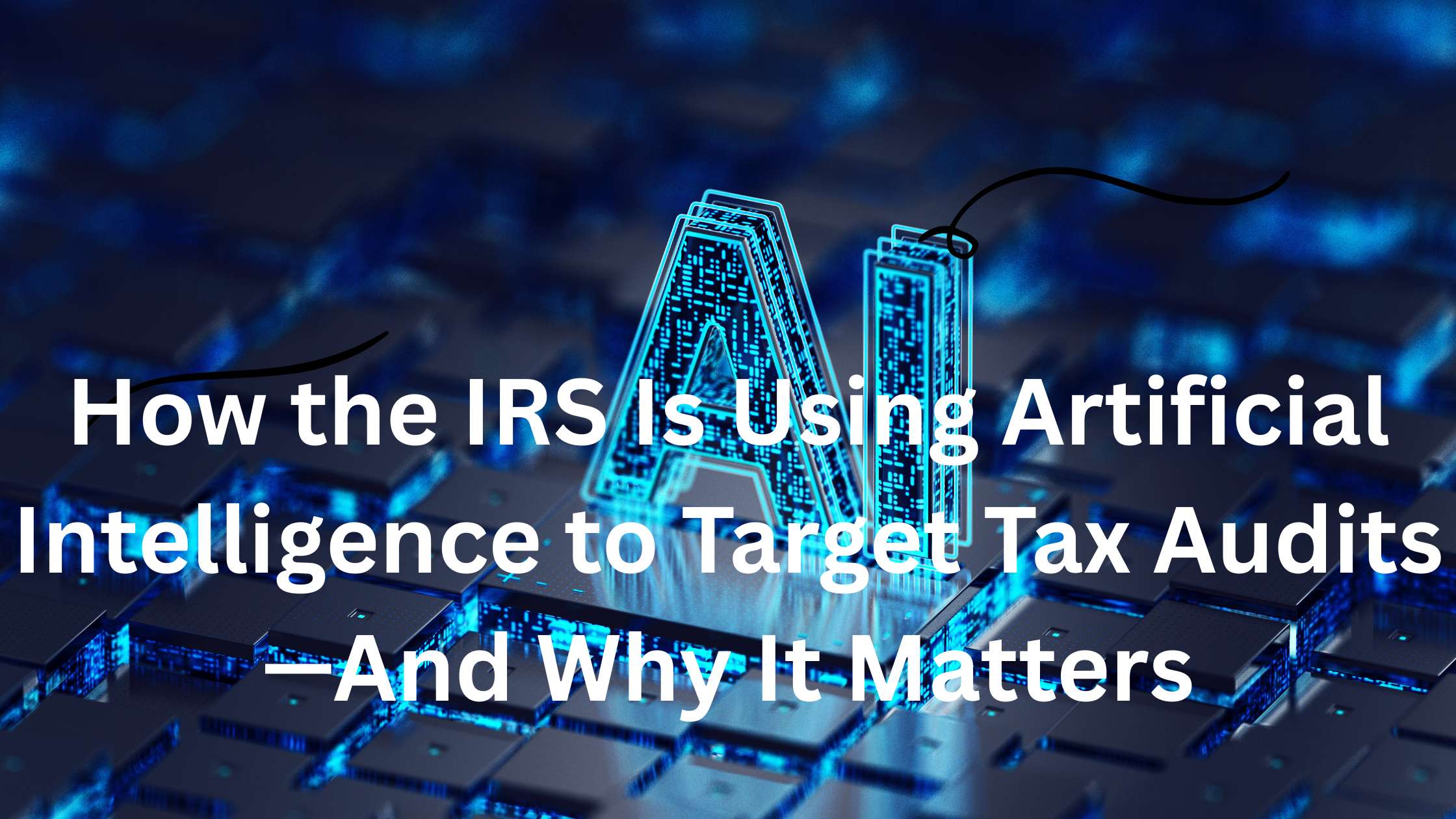AI at the IRS: A New Era in Tax Compliance
If you’ve ever wondered how the IRS decides which tax returns to audit, you’re not alone. Traditionally, the process involved a mix of manual review and basic scoring models, often leading to audits that found nothing wrong, a drain on IRS resources and a headache for honest taxpayers. But change is underway, thanks to artificial intelligence (AI).
Why the Shift?
The U.S. tax gap—the difference between what’s owed and what’s paid—is a staggering $688 billion per year. Most of this is from underreporting income. With limited resources, the IRS needs smarter ways to spot potential noncompliance and avoid wasting time on compliant taxpayers.
Enter Artificial Intelligence
With funding from the Inflation Reduction Act, the IRS has started using AI to help pick which returns and issues to audit. Here’s how:
- Smarter Selection:
- AI models now analyze patterns across millions of tax returns, looking for outliers or red flags that suggest errors or fraud.
- Instead of relying solely on old audit data, these systems can spot new and emerging types of noncompliance.
- Three Main Focus Areas:
- Individual Returns (1040): AI helps classify and select returns with the highest risk of issues.
- Corporations: The Line Anomaly Recommender model identifies unusual items on large corporate tax returns.
- Large Partnerships: Special AI tools target complex partnerships, which are often challenging to audit.
What’s Working—And What Needs Work
The move to AI is already saving time. Automated models have allowed the IRS to shift employees from manual review to active audits, potentially increasing tax assessments. But the system isn’t perfect:
- The IRS isn’t consistently using feedback from audit outcomes to improve its AI—meaning lessons from past audits may be missed.
- Advanced AI methods like “ensemble learning” (combining several algorithms for better predictions) are only partially adopted.
- There’s a lack of clear metrics to show if AI-based audits are truly more effective than traditional methods.
Looking Ahead
TIGTA (the IRS’s internal watchdog) recommends the agency:
- Use real-world audit results to continually update and refine AI models.
- Expand advanced AI methods for even better accuracy.
- Set up stronger systems to measure and monitor the success of AI in audit selection.
The IRS has agreed to these steps but notes that staffing and future guidance will affect how quickly improvements happen.
What Does This Mean for Taxpayers and Businesses?
The IRS’s use of AI aims to reduce unnecessary audits and focus resources on returns most likely to have issues. For compliant taxpayers, this should mean fewer unwarranted headaches. For those stretching the rules, expect the net to get a bit tighter.
As AI becomes more embedded in tax enforcement, businesses and individuals should expect ongoing changes—and likely, smarter scrutiny—from the IRS.
Have questions about AI and IRS audits? Let’s discuss how these changes could impact your business or personal tax strategy. Contact us today at admin@fas-accountingsolutions.com.




